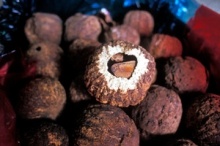
Some foods highlighted to provide nutrients, minerals and anti-oxidants that keep the body healthy include the Buriti palm fruit, which contains the highest known levels of vitamin A of any plant in the world and the açaí fruit, which is hailed as a “superfood” for its high antioxidant and omega fatty acid content. The book seeks to provide people in the developing world with accessible knowledge of Amazon plants and foods they can use to improve their livelihoods. Fruit Trees and Useful Plants in Amazonian Life, is written in easy-to-grasp language and incorporates the folklore and customs of rural villagers so they can easily put the book’s recommendations into practice.
Natural Nutritional & Medicinal Wealth:
“Some 80 per cent of people living in the developing world rely on non-wood forest products such as fruits and medicinal plants for their nutritional and health needs,” according to Eduardo Rojas-Briales, Assistant Director-General for Forestry at the Food and Agriculture Organization (FAO). “This new book provides comprehensive information on Amazon fruits and plants, and is a perfect example of how to make our knowledge accessible for poor people to help them maximize the benefits from forest products and services and improve their livelihoods.” See Film Report: -“Gisele Bundchen-Amazon” -
diplomaticallyincorrect.org/films/movie/gisele-bundchen-amazon/28496
Innovative Way of Presenting Science:
FAO estimates that 25 per cent of people in developing countries are functionally illiterate, and that in rural areas this figure can be of up to 40 per cent. The layout of the book takes this into account and allows readers who lack formal education to extract knowledge using pictures and numbers. It is intended to address both the illiterate and literate – 25% of people in developing countries and 40% in those rural areas are illiterate. “Some 90 Brazilian and international researchers who were willing to present their research to rural villagers in alternative formats – including jokes, recipes and pictures – collaborated in the production of this book,” said Tina Etherington, who managed the publication project for FAO’s forestry department.
Ms. Etherington also highlighted that farmers, midwives, hunters and musicians contributed insights and their experiences to the publication, making it an “innovative way of presenting science and how those techniques can be transferred to other areas in the world.” (Read: -“Deforestation as Seen from Above” -
diplomaticallyincorrect.org/films/blog_post/deforestation-as-seen-from-above-by-ambassador-mo/42219).
The publication was co-produced by FAO, the Centre for International Forestry Research (CIFOR) and People and Plants International, and was unveiled in a ceremony in Rome marking the end of the International Year of Forests. The Amazon is the largest contiguous tropical forest remaining in the world, with 25 million people living in the Brazilian Amazon alone. However, deforestation, fire and climate change could destabilize the region and result in the forest shrinking to one third of its size in 65 years. (See Film Report: - “Amazon Alive UN” -
diplomaticallyincorrect.org/films/movie/amazon-aliveun/26188).
Link to Book & FAO -
www.fao.org/news/story/en/item/117368/icode/
By Ambassador Muhamed Sacirbey
Facebook-Become a Fan at “Diplomatically Incorrect”
Twitter – Follow us at DiplomaticallyX
ECOLOGY-DIPLOMAT Channel -
diplomaticallyincorrect.org/c/ecology-diplomat

